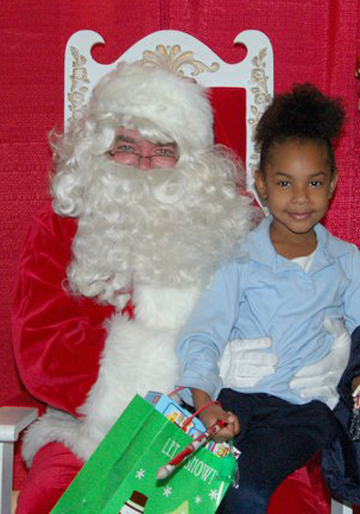In just a few weeks, many of you will be packing your bags to head to the Los Angeles area for DSA’s Communications & Marketing Conference (Dec. 5-7). Make sure you leave room in your suitcase for a gift for a child in need. To help make the holidays a little brighter for area kids, The Direct Selling Education Foundation is once again sponsoring “Pack a Present Toy Drive,” this year partnering with the South Bay chapter of the Boys & Girls Clubs.
“Now in its third year, DSEF’s Pack a Present event is becoming a December tradition for direct selling company and supplier company executives,” said Charlie Orr, DSEF Executive Director. “I encourage every conference attendee to “Pack a Present,” and help us demonstrate our industry’s giving spirit to the local community.”
DSEF will collect the toys at the Terranea Resort in Rancho Palos Verdes, CA, from Dec. 5-7. On Thursday, December 6, Boys & Girls Club representatives will bring a group of children to the hotel to have cocoa and cookies with Santa and receive the gifts.
“The holidays can be a tough time for kids in need,” said Tamara Ingram, DSEF Community Program Manager. “DSEF’s Pack a Present not only provides a memorable experience for the kids who join us for the event, it ensures hundreds of area children will feel the joy of the season.”
DSEF’s Pack a Present event is one of the many ways the direct selling industry gives back to those less fortunate during the holidays. In the past eight years, direct sellers have donated more than $85 million to the TODAY Show Holiday Gift Drive, according to Amy Robinson, DSA’s Chief Marketing Officer. “The TODAY Show Holiday Gift Drive is just one example each year of how direct selling serves as a force for good in our communities, across the country and throughout the world,” Amy said. “DSEF’s Pack a Present provides a heartwarming opportunity for direct selling executives to offer a personal donation, and we’re thrilled that the Foundation is hosting the event at our upcoming Communications & Marketing Conference.”
DSEF wishes to thank Pack a Present’s generous sponsors Amway, Team National and 4Life, and extend our special appreciation to John Killacky of Bartha for portraying Santa Claus at this year’s event.
While donated gifts may be for children of any age, gifts for teens are especially needed. Cash gifts are also welcome and all gifts should be in their original packaging and not gift-wrapped.
If you haven’t yet done so, you may register here for DSA’s Communications & Marketing Conference. For more information about DSEF’s Pack a Present Toy Drive, or to inquire about available sponsorships, contact Tamara Ingram.









